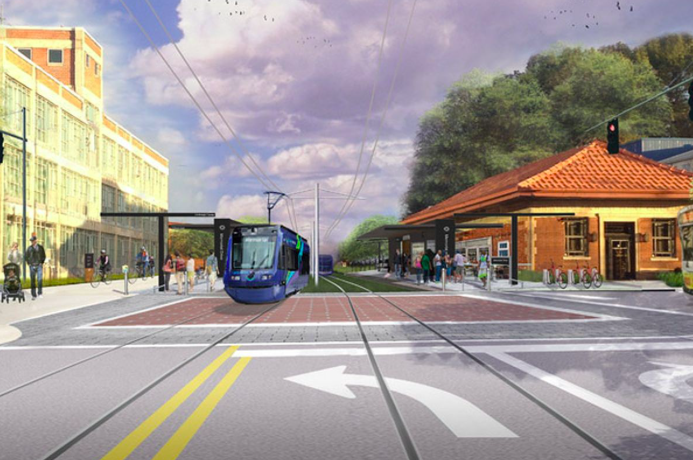The Atlanta streetcar is not the kind of transit cities should try to replicate.
The $98 million streetcar line operates in mixed traffic on a short 1.3-mile route in downtown Atlanta. It is slow, unreliable, and carries fewer than 1,000 trips per day.
The streetcar should at least serve as a cautionary tale as Atlanta looks to expand its rail network. But it looks like decision makers are in jeopardy of repeating the mistakes of the streetcar.
In 2016, Atlanta voters approved a $2.5 billion levy to fund transit expansion. In addition to bus upgrades, the project list includes 21 miles of light rail. About a third of that would run in dedicated rights of way along the city's "BeltLine," a ring encircling central neighborhoods.
But there's a lot of uncertainty about the other 14 miles. The plan calls for an east-west light rail line that would run through downtown, including a section along the streetcar route, connecting to the BeltLine at each end.
That alignment sets off alarm bells for transit watchdogs who know that operating in mixed traffic is a recipe for failure. By using the streetcar route without getting cars out of the way, the new light rail network be plagued by the same problems, writes Simon Berrebi at Atlanta Magazine:
To relegate expensive transit infrastructure in mixed traffic means that trains will only go as fast as the cars around them. It’s profoundly unfair that transit vehicles, which can carry a hundred times more people than private cars, can get stuck in the same congestion. And it doesn’t make economic sense. As Georgia Tech professor Kari Watkins says: “When buses and trains are mixed in with general traffic, there is no incentive for people to chose transit.” And if they instead opt to drive themselves, streets will get more congested, air more polluted, and intersections more deadly.
Nothing is final yet, and it's not too late to design Atlanta's new routes so light rail doesn't get bogged down by motor vehicle traffic. This once-in-a-generation opportunity hinges on the city's willingness to claim street space from cars and dedicate it to transit.






